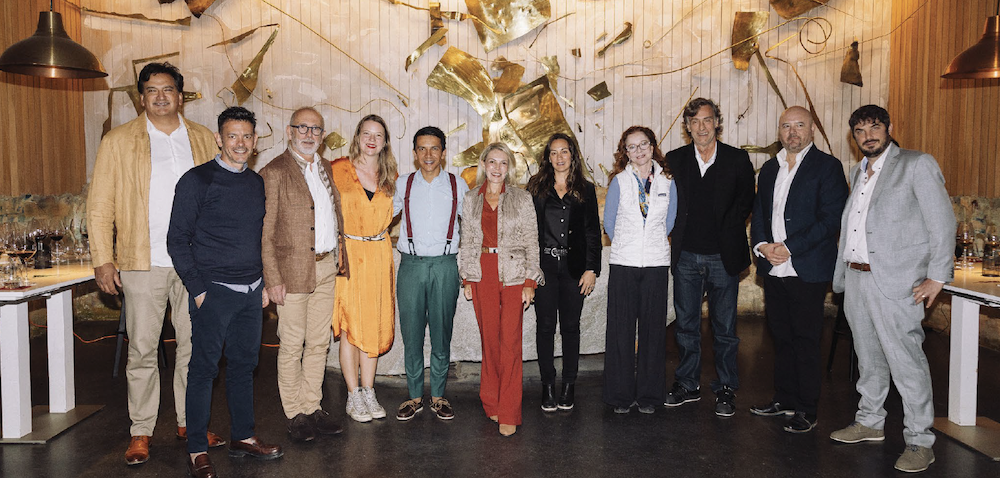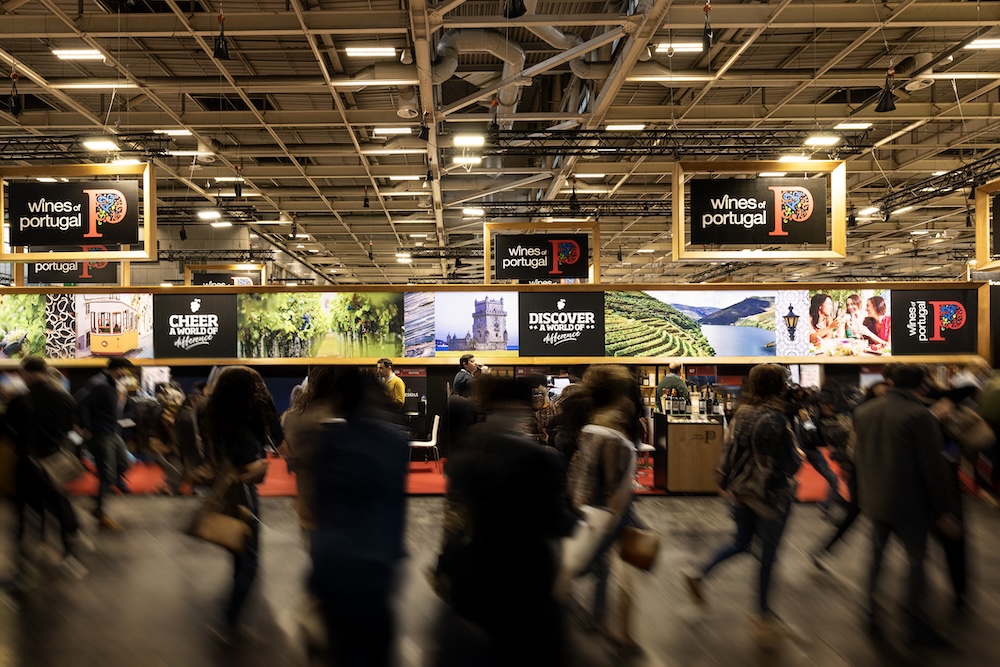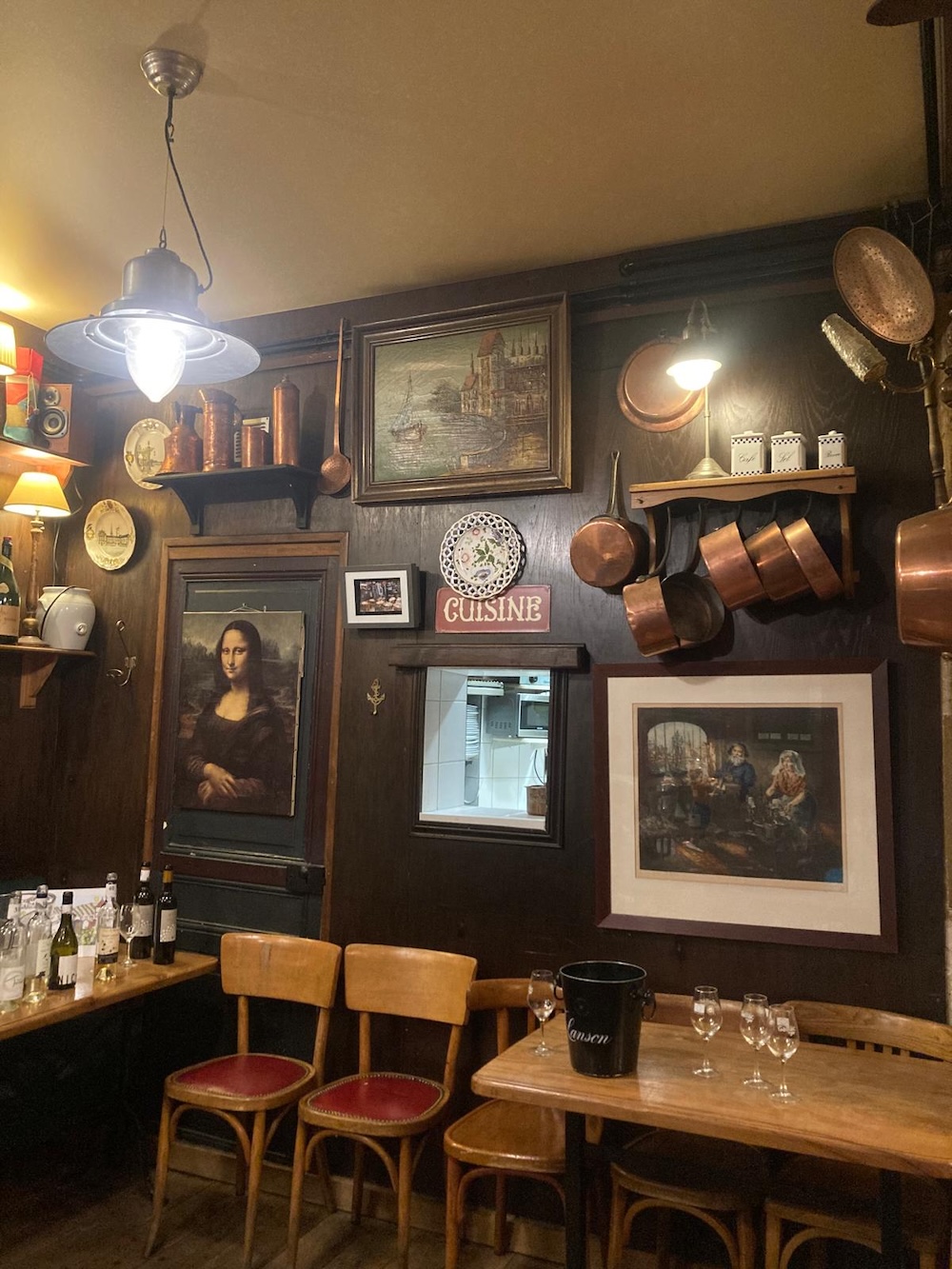
Discovery

Discovery
By Joanne Gibson, posted on 31 January 2022
From modest beginnings half a century ago, Cap Classique is now the fastest-growing wine category in South Africa, exploding not only in terms of quantity but also in effervescent quality.
 Sabrage is a highlight for visitors tasting the Pierre Jourdan range of Cap Classiques at Haute Cabrière.
Sabrage is a highlight for visitors tasting the Pierre Jourdan range of Cap Classiques at Haute Cabrière.
Cap Classique is the name for bottle-fermented sparkling wine produced in South Africa, where there are now 250 wineries producing over 10 million litres annually. Over four-fifths is consumed locally, with the domestic market doubling every five years, but exports are also increasing: up just 1% by volume in 2020 due to Covid-19 restrictions (including a temporary ban on alcohol shipments imposed by the SA government) but up 18% by value.
All sorts of grape varieties are used for Cap Classique, from Sauvignon Blanc (such as the Bitou Vineyards Brut 2017 which scored 91 points in the Gilbert & Gaillard International Challenge) to Pinotage (for example, L’Avenir’s Brut Rosé 2018, which scored 88 points). However, most producers have embraced the traditional Champagne varieties of Chardonnay, Pinot Noir and sometimes Pinot Meunier, with terroir expressions ranging from the limestone-rich soils of Robertson to cooler mountainous and maritime appellations. There are blends, blanc de blancs and rosés, ranging stylistically from ‘brut nature’ (less than 3g/l residual sugar) to ‘demi sec’ (32-50g/l). A minimum of 12 months’ lees contact prior to disgorgement is required by law, but there are many rich, complex wines that have been maturing in the bottle for 60 months and more…
2021 marks 50 years of Cap Classique production in South Africa (SA). The idea started fizzing in the late 1960s when winemakers including Frans Malan of Simonsig in Stellenbosch and Nicky Krone of Twee Jonge Gezellen in Tulbagh visited Champagne. Krone imported yeasts and equipment from Épernay to embark on production in 1969, but his cellar was destroyed in an earthquake that year, suspending his plans. Malan, meanwhile, commissioned a local carpenter to build a rudimentary riddling rack and in 1971 he made a bottle-fermented Brut from Chenin Blanc. He named it Kaapse Vonkel (Cape Sparkle) and released it in 1973 with a label stating ‘fermented in THIS bottle’.
‘I’m exceptionally proud of how that small start of Kaapse Vonkel by my father has grown to such an extent,’ says Johan Malan, who took the winemaking reins at Simonsig in 1982, switched from Chenin to the traditional Champagne varieties in 1987, and has since expanded the Kaapse Vonkel range to include a Brut Rosé (with Pinotage and Pinot Noir as its base), two demi-sec wines (Satin Nectar and Satin Nectar Rosé), and Cuvée Royale, which is a prestige blanc de blancs produced only in exceptional vintages (the 2017 achieving a Gilbert & Gaillard rating of 94 points).
In addition to Simonsig’s own fruit, grapes are sourced from cool-climate appellations such as Darling and Elgin, as well as the limestone-rich soils of Robertson. ‘Every different source adds building blocks for the final cuvée and that’s where greater complexity is derived,’ says Malan.
Currently he and his dedicated Cap Classique winemaker, Charl Schoeman, are exploring the possibilities offered by other varieties, such as Pinot Blanc with its high natural acidity, and the use of clay amphorae. ‘The focus must remain on the best grapes and classic pressing of whole bunches to make the finest, most delicate base wine,’ he insists. ‘The long, difficult road is still the best way!’
The second producer to hit the market was Boschendal in Franschhoek with a Brut made by Achim von Arnim in 1981, shortly before he left to establish nearby Haute Cabrière with its Pierre Jourdan Cap Classique range (today one of SA’s most popular brands, in the safe hands of second-generation Takuan von Arnim, with the Pierre Jourdan Brut NV, Blanc de Blancs NV and Belle Rose NV all achieving gold medals from Gilbert & Gaillard).

At Boschendal, it’s fascinating to note that the maiden Brut was made from Crouchen Blanc, Shiraz and Tinta Barocca! Pinot Noir replaced the reds in 1982, with Chardonnay introduced in 1985, and today Boschendal produces five Cap Classiques: a Brut NV (93 points), Brut Rosé NV (90), Demi Sec NV (not tasted), Grand Cuvée Brut (92 for the 2015 vintage, aged on the lees for 48 months) and premium Blanc de Blancs named Jean le Long (93 for the 2009, on the lees for a full decade).
‘In recent years, we have placed a focus on creating more refinement and delicacy while still delivering on fullness of flavour and autolytic character,’ says Boschendal winemaker Danielle Coetsee, stressing: ‘Cap Classique will never be Champagne, just as Champagne will never be Cap Classique. There is a boldness and lushness in Cap Classique that you don't easily find in sparkling wines from other countries. Today Cap Classique stands proudly on its own.’
‘Cap Classique does not pretend to replace Champagne; it reflects more sunlight in the bottle which, combined with greater affordability, will always put a smile on your face,’ says Jeff Grier of Villiera in Stellenbosch when asked how he persuades traditional Champagne drinkers to try Cap Classique. However, he acknowledges that meeting Champagne producer Jean Louis Denois in 1983 was the catalyst in his decision to start making bottle-fermented sparkling wine in 1984, resulting in a decade-long partnership. ‘Apart from JLD passing on generations of Champagne know-how, I had the opportunity to work in Champagne for three vintages early in our development.’
Today, Cap Classique accounts for 40% of Villiera’s production, the range including Tradition Brut NV (90 points from Gilbert & Gaillard), Tradition Rosé Brut NV (91 points), prestige cuvée Monro Brut (95 points for the 2014 vintage, which had 66 months of lees ageing), and the untasted zero-dosage Brut Natural and low-alcohol Starlight Brut (SA’s first ‘light’ Cap Classique).
Grier is gradually passing the winemaker baton to second-generation Xander Grier, and together they continue to incorporate new ideas: ‘Creating a solera system for the barrel ageing of our dosage wine has made a significant difference,’ they say. ‘Whichever Villiera wine you choose, you will taste the sun and the dedication of a family in love with bottle-fermented bubbly.’
Following Tulbagh’s devastating earthquake in 1969, Nicky Krone slowly rebuilt Twee Jonge Gezellen (TJG), complete with SA’s first underground Cap Classique cellar (with vaulted ceilings designed to withstand earth tremors). The first Krone Borealis Brut 1987 was released to great acclaim in 1991, and as a pioneer in sulphite-free sparkling wine, Krone was named Diners Club Winemaker of the Year in 1995. Today his son crafts Cap Classique under his own name, Matthew Krone Wines, but TJG and the Krone brand were acquired in 2012 by the late Tim Rands, founder/owner of independent wine specialist Vinimark.
Krone has benefited from investment by Vinimark as well as the expertise of Vinimark’s production director, Rudiger Gretschel, who works with winemaker Stephan de Beer to craft vintage-dated Cap Classiques only. ‘These show the characteristics of the year without having to meet a house style, which blends away individualism,’ explains De Beer. ‘Because we don’t have frost or hail or a super-wet growing season, our climate allows us to make vintage wines more easily than in Champagne,’ says Gretschel. ‘We really like to celebrate the small nuances that result from vintage differences.’
At Krone focus is also increasingly being placed on site-specific wines, such as the Kaaimansgat Blanc de Blancs 2016 from a famed vineyard in the Elandskloof, matured for 32 months on the lees (93 points from Gilbert & Gaillard). ‘We will be introducing two more single-vineyard Blanc de Blancs,’ reveals Gretschel. ‘One from TJG in Tulbagh and one from Koelfontein on the Ceres plateau.’
There’s plenty of ‘geek appeal’ at Krone, from the use of foudres and clay amphorae to the natural winemaking and terroir focus. However, Gretschel is equally excited about the ‘phenomenal’ success of Krone’s demi-sec wines, named Night Nectar and Night Nectar Rosé. ‘Krone was the first in the semi-sweet sector, which is really driving growth in the domestic market. Our Nectars have made Krone arguably the biggest Cap Classique brand, selling more than Graham Beck and Pongrácz.’

Owned by producer-wholesaler Distell, Pongrácz remains a hugely popular brand in SA, named in honour of Desiderius Pongrácz, a Hungarian nobleman and refugee who revolutionised viticulture in the Cape (his 1978 book, Practical Viticulture, is still used by students). Launched in 1990, Pongrácz Brut was made from 75% Pinot and 25% Chardonnay, aged on the lees for two years, and the range has since expanded to include a Blanc de Blancs NV (90 points from Gilbert & Gaillard), Rosé NV (93 points), Noble Nectar NV (not tasted) and flagship vintage Desiderius (95 points for the 2013).
In 2019, Andiswa Mapheleba took the Pongrácz winemaking reins from Elunda Basson, now at Steenberg Vineyards (which boasts three Cap Classiques of its own). Having fallen in love with ‘the beautiful merger of chemistry and creativity’ in bottle-fermented bubbly, Mapheleba says she can’t see herself working with any other style of wine again. ‘The base wine is like an artist’s canvas, it requires such a delicate touch.’
Grapes for Pongrácz are widely sourced, mostly from cooler areas with a huge diversity of soil types. ‘This helps us achieve consistency but also complexity. We also have enough acidity in our wines without needing to take antacid when we drink them,’ she laughs. ‘Seriously, though, I do find our Cap Classiques so much more rounded than many of the Champagnes I have tasted.’
If Mapheleba is just getting started, Graham Beck cellarmaster Pieter Ferreira is happy to report that his four-decade journey in pursuit of the perfect bubble is still continuing. He made his first Cap Classique at Haute Cabrière in 1984, spending seven years as Achim von Arnim’s apprentice (and working vintages in Champagne at Mumm in 1987, Georges Vesselle in 1988 and Moët & Chandon in 1989) before moving to Graham Beck’s dedicated, state-of-the-art Cap Classique cellars in Robertson in 1990. Today Graham Beck produces three non-vintage wines (including the Brut affectionately dubbed the ‘President’s Choice’ after being served both at Nelson Mandela’s inauguration in 1994 and Barack Obama’s presidential win in 2008), three vintage wines (a Blanc de Blancs, Brut Rosé and Brut Zero now named Ultra Brut, with the 2015 rated 93 points by Gilbert & Gaillard), and the prestige flagship Cuvée Clive, aged five years on the lees (94 points for the 2015).
About 80% of the grapes come from Graham Beck’s own vineyards, benefiting from Robertson’s rich limestone deposits and huge diurnal temperature shifts, with the balance sourced from seven other geographical areas. ‘This assists us in pursuing consistency and continuity,’ says Ferreira, adding that research and development is ongoing: seeing how row direction affects flavours, for example, and bottle-fermenting some of the wine under cork rather than crown cap. There are also plans to plant ‘forgotten’ Champagne varietals such as Pinot Blanc, Petit Meslier and Arbanne.
The most successful results of all this experimentation will be offered under a new tier, called the Artisan Collection, giving Ferreira and his winemaker Pierre de Klerk carte blanche to produce spectacular niche wines that are never the same. ‘It is a way for us to passionately express our aspirational journey,’ says Ferreira, revealing that the first release from this collection is the Extended Lees Ageing 2009, which matured for 11 years prior to disgorgement.

However, when Graham Beck releases its Cap Classique matured under cork instead of crown cap, it won’t be the first. The artisanal Agrafe (Tirage Liège) method was introduced by Le Lude in Franschhoek, established in 2011 by Nic and Ferda Barrow to specialise in premium Cap Classiques. Their maiden Agrafe Reserve 2012 won a platinum award at the 2019 Decanter World Wine Awards, and now the 2013 has achieved a 95-point rating from Gilbert & Gaillard. ‘Awards such as these show that our pioneering approach is paying off and creating wines which are internationally renowned for finesse, elegance and refinement,’ say the Barrows.
As chairman of the Cap Classique Producers Association, established in 1992 with the collective aim of crafting wines of superlative quality, capable of standing alongside the world’s best, Pieter Ferreira concludes:
‘The day you don’t want to drink Champagne, Cap Classique should be your go-to wine. At the current price-to-quality ratio, we are the better alternative.’
By Joanne Gibson

Discovery

Discovery

Discovery